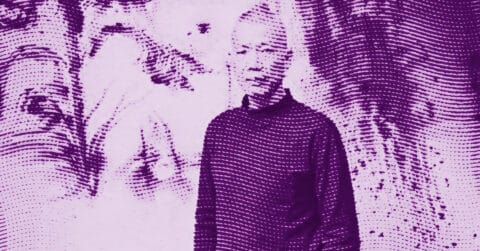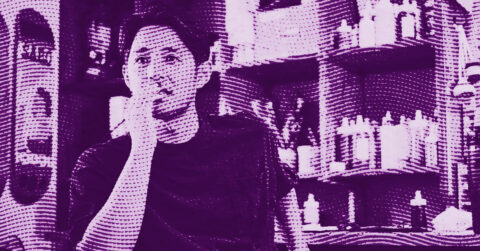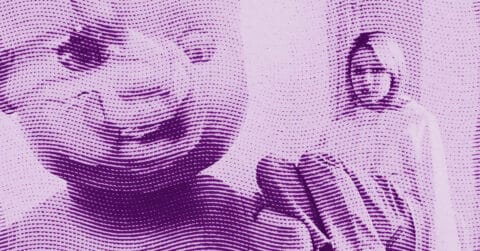Listen to me carefully, you bunch of snobs, it is high time to talk about Karen Kilimnik, born in 1955 in Philadelphia, this artist who redefines the boundaries between high culture and popular culture with masterful insolence. If you think you understand all there is about her art by reducing it to teenage scribbles or superficial “scatter art,” think again. Kilimnik is a magician who transforms chaos into striking social commentary, an alchemist who transmutes kitsch into conceptual gold.
In her installations from the 1980s-1990s, she was already creating immersive environments that shattered our aesthetic certainties. Take “The Hellfire Club Episode of the Avengers” (1989), that emblematic work where photocopies, clothes, and various objects mingle in apparent disorder. But don’t be mistaken: this is not the lair of a disturbed groupie, it is a surgical dissection of our relationship to images and popular culture. Walter Benjamin spoke of the aura of the artwork in the age of its technical reproducibility, but Kilimnik goes further. She does not just question authenticity; she creates a new form of aura from the debris of mass culture.
Kilimnik’s installations function as machines to deconstruct our cultural hierarchies. She accumulates heteroclite references with the precision of a present-day archaeologist: British TV series, classical ballets, famous crimes, haute couture fashion, everything is included. This accumulation is not gratuitous. It echoes what Claude Lévi-Strauss called “wild thought,” the ability to create meaning by tinkering with available materials. Except that Kilimnik tinkers with the icons of our time, transforming cultural junk into incisive social commentary.
Her painting technique, often described as clumsy by shortsighted critics, is actually a sophisticated strategy. When she paints her portraits of celebrities or her romantic landscapes with an apparent awkwardness, she is not merely copying; she is reinventing. Her rough brushstrokes and sometimes garish colors are deliberate choices that echo Jacques Rancière’s theories on the “distribution of the sensible.” She disrupts established codes of representation, creating a new aesthetic that challenges the conventions of “good taste.”
Let’s take her series on classical ballets. These are not simple nostalgic tributes to a traditional art form. By blending ballet iconography with contemporary elements, she creates what Roland Barthes would have called a complex visual “text” where meanings multiply and clash. The tutus and pointe shoes become ambiguous symbols, both revered and subverted. It is a subtle critique of our relationship with tradition and cultural authority.
The way Kilimnik deals with popular culture is particularly revealing. She never falls into the trap of easy irony or reversed snobbery. On the contrary, she approaches her subjects with a unique mix of sincere fascination and critical distance. Her installations based on the “The Avengers” series are not mere fan tributes; they are complex explorations of our relationship with contemporary mythologies. Diana Rigg as Emma Peel becomes, under her brush, a figure as significant as a Renaissance Madonna.
Kilimnik’s use of mediated violence deserves mentioning. Her references to the Charles Manson murders or her installations evoking crime scenes are not gratuitous provocations. They fit within a theoretical tradition dating back to Georges Bataille, exploring the complex links between beauty and violence, glamour and horror. By juxtaposing elements of pop culture with references to real violence, she creates a biting commentary on our media society that turns everything into a spectacle.
The temporal dimension in Kilimnik’s work is fascinating. She blends eras with disconcerting freedom: a portrait of Leonardo DiCaprio can sit next to a reproduction of Gainsborough, a classical ballet scene can be invaded by references to contemporary fashion. This is not easy postmodernism; it is a profound reflection on what Walter Benjamin called “now-time,” this ability to make different temporalities converse within a single space.
Her treatment of exhibition spaces is just as revolutionary and innovative. Her installations transform galleries into immersive environments where the boundaries between art and everyday life blur. She creates what Michel Foucault would have called “heterotopias,” other spaces where the usual rules of representation are suspended. A corner of a gallery can become an 18th-century boudoir, a crime scene, or a TV series set, often all at once. Her installations are not simple accumulations of objects but carefully orchestrated environments creating what Maurice Merleau-Ponty would have called “phenomenal fields,” spaces where our usual perception of the world is suspended and reconfigured. A simple gallery corner can become a portal to other worlds, other times, other possibilities.
Kilimnik’s relationship to fashion and glamour is particularly complex. Her portraits of models like Kate Moss are not simple celebrations of commercial beauty. They function as subtle commentaries on what Guy Debord called the society of the spectacle. By painting these fashion icons in a deliberately imperfect style, she reveals the cracks in the glamorous facade while creating a new form of more ambiguous beauty.
Kilimnik’s latest works continue to explore these themes with renewed intensity. Her recent installations, with their bold mixes of historical and contemporary references, their play on authenticity and copying, create what Jean Baudrillard would have called “simulacra,” not copies of originals, but originals of a new kind, which challenge the very notion of originality.
Kilimnik creates works that operate on multiple levels simultaneously. To the untrained viewer, her installations may seem chaotic or superficial. But for those who take the time to look closely, they reveal successive layers of meaning, like a medieval manuscript whose pages have been overlaid with contemporary graffiti.
Her use of “poor” materials like photocopies, magazine clippings, or found objects is not a default choice but a conscious strategy that echoes Theodor Adorno’s theories on mass culture. By transforming these banal materials into complex works of art, she shows how popular culture can be reclaimed and subverted.
Karen Kilimnik appears as a much more complex and subversive artist than her detractors wanted to see. Her work constitutes a biting critique of our cultural value systems while creating a new form of artistic expression that transcends traditional dichotomies between high and low art. She shows us that true radicalism in art does not lie in the ostentatious rejection of conventions, but in their subtle and systematic subversion. Her ability to transform apparent chaos into sophisticated social commentary, to make different eras and cultural registers dialogue, makes her one of the most important artists of our time.
















